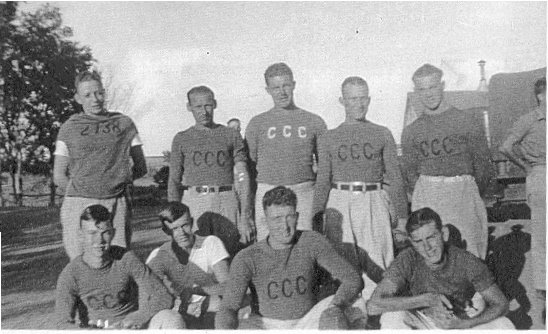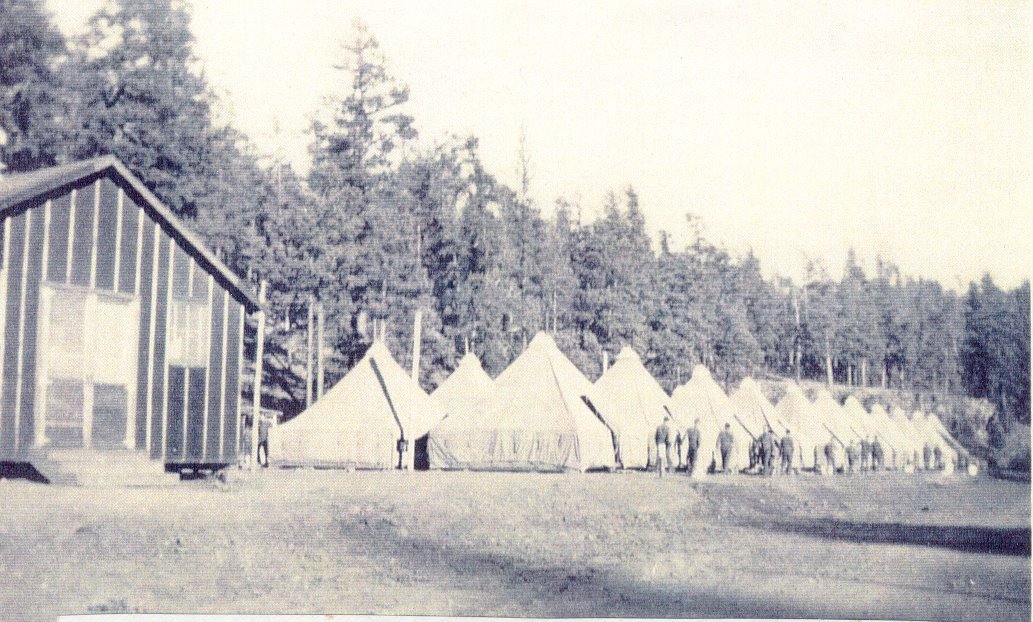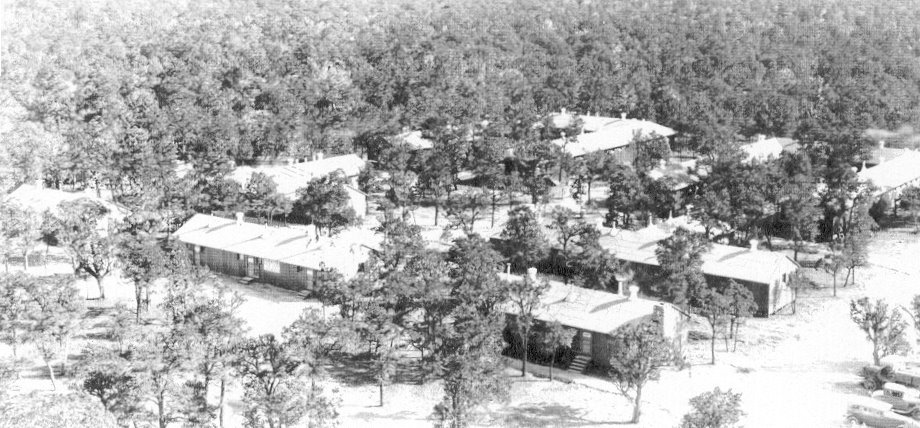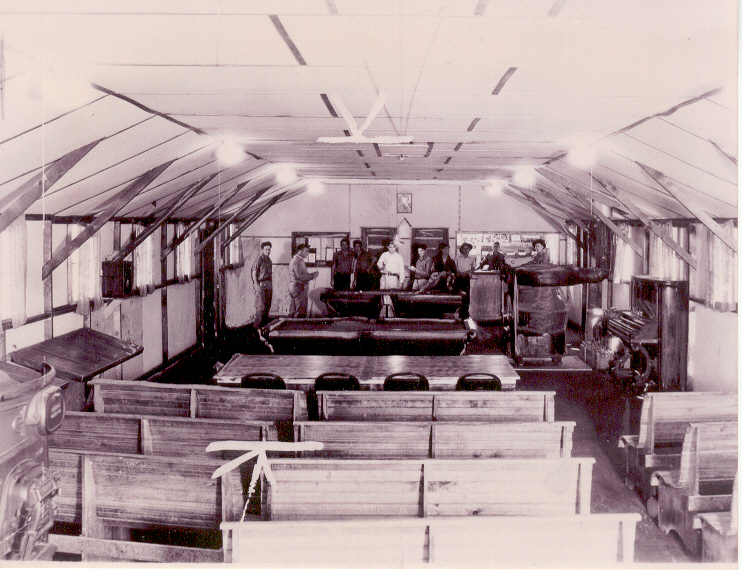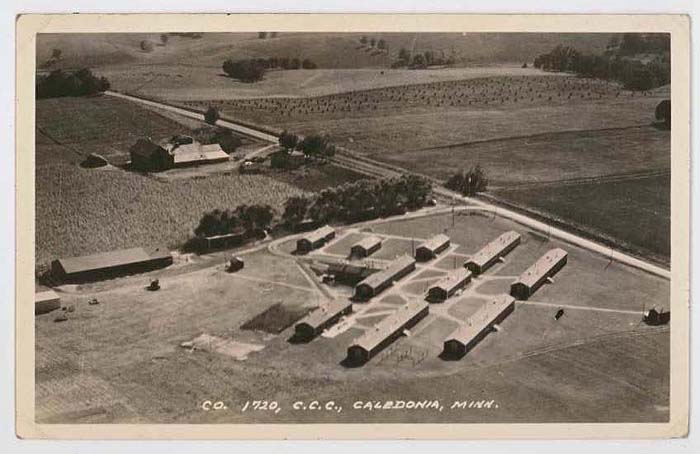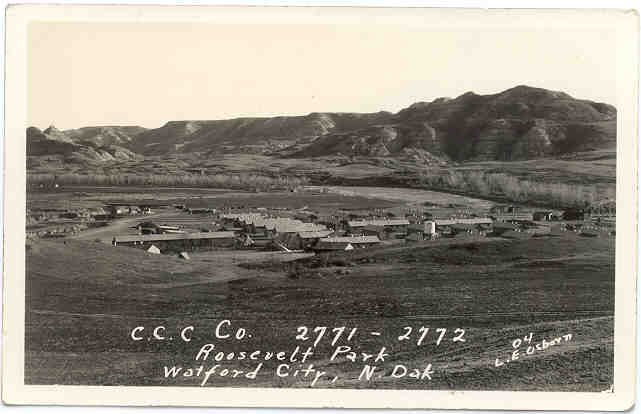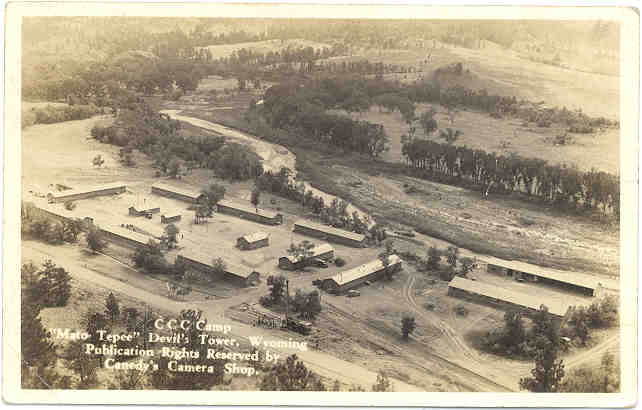 Each year as Christmas rolls closer, it is difficult not to
give some thought to what life must have been like in the CCC camps during the
holidays. Much of what we know about
life in the camps during the holidays comes from reports in the individual camp
newspapers.
Each year as Christmas rolls closer, it is difficult not to
give some thought to what life must have been like in the CCC camps during the
holidays. Much of what we know about
life in the camps during the holidays comes from reports in the individual camp
newspapers.
For the enrollees of Company 2704 at Camp SCS-4-M in
Chatfield, Minnesota, December 1937 must have been a bittersweet time
indeed. Though Christmas and New Year
were looming large on the calendar, so too was the prospect of having to
disband the company. So, while it was
printed in hues of green and red, the cover of the Company 2704 camp newspaper
for December 1937 didn’t depict an image of Santa Claus or reindeer, but rather
a comical image of enrollees loading up their footlockers and barracks bags
under the title “Final Edition.”
 Nevertheless, whether in honor of the Christmas season or to
mark the disbanding of the company, the paper announced that a dinner-smoker
event was scheduled and that there would be, “an extra special dinner in the
mess hall,” that would be “a second Thanksgiving feast.”
Nevertheless, whether in honor of the Christmas season or to
mark the disbanding of the company, the paper announced that a dinner-smoker
event was scheduled and that there would be, “an extra special dinner in the
mess hall,” that would be “a second Thanksgiving feast.”
Many enrollees – indeed as many as could afford to and who
had leave saved up – left camp to be with relatives. The December, 1937 Hualpai Echo reported on the plans of some members of Company 1837
at camp SP-8-A near Kingman, Arizona:
Joe Snow, Lloyd Perry and George Edwards left the 16th
for a holiday trip to Los Angeles and other points of interest along the
Pacific seaboard. They will return to
spend New Year’s Day in camp.
Al Lancaster will spend his Yuletide vacation visiting his family in Tucson.
Manuel Franco, Luis Rios, Quintin Henderson and Joe
Lopez will leave the 24th for San Diego where they will spend the
holidays visiting relatives – so they say.
They also plan side trips to Tia Juana in Old Mexico and Los Angeles.
The article went on to explain that those enrollees staying
in camp could look forward to something special too:
A Christmas Tree with all the trimmings is planned for the
men staying in camp (for) Xmas. A unique
way of giving a present to everyone has been worked out. The climax to the Xmas celebration in camp is
the extra-special dinner which will satisfy the gastronic (sic) appetites of
all.
At the bottom of the page was included a final admonition: “Don’t forget a Christmas card to the folks
back home…” Good advice in 1937, good
advice today. |
| Road project (in the snow). Company 1152, N. Stratford New Hampshire. First Corps Area. |
Veterans in Company 1826V in the Nogales Sub-District in
Arizona reportedly celebrated a quiet and dignified Christmas in camp according
to an article in their Company paper:
Christmas at Camp F-30-A was very quietly but appropriately
observed. A large number of men were
absent from camp for the weekend but those who were present participated in
making Christmas of 1936 a very quiet but dignified occasion.
Judging from the great number of packages and cards, Santa
Claus was unusually generous in his plans for the members of Company 1826. “Merry Christmas” was the password of the
company during the holiday season and a good time was had by all.
There seems little question that most camp commanders and technical agency staff worked hard to keep morale high during the holidays. In her book Gold Medal CCC Company 1538, Kathy Mays Smith recounts the very special Christmas party held for the members of Company 1538 stationed at Camp Wyoming near Pineville, West Virginia in 1935. The gala event was kept a secret from most of the enrollees right up until they filed into the festively decorated camp recreation hall. The camp commander addressed the assembled men with greetings of the season before reciting Dickens’ “A Christmas Carol.” An enrollee choir sang Christmas songs, including “Silent Night,” and three men, directed by an Army lieutenant, acted out a pantomime skit entitled “The Three Wise Men.” But the high point of the evening came when,
“At last came the climax of the evening. Instructed to line up in order to sign the
payroll, as each one passed the table where the officers stood, he was handed,
not a pen and a book full of dotted lines, but a real honest-to-goodness watch,
the gift of the Administrative Personnel and Technical Service.”
 Today it may be difficult to conceive of a time when so many
had nothing or nearly nothing; a time when fresh fruit in a Christmas stocking
was considered a luxury for some.
Homemade paper decorations and handwritten greetings have given way to
brightly colored, electrical powered, mass produced displays made
overseas. However, if we concentrate for
a moment and let our mind’s eye open to a vision of the past, we may still
catch a glimpse of young men, far from home and family, gathered in a brightly
lit mess hall or recreation building in a CCC camp nestled in a western forest,
or perched on a ridgeline in an eastern state somewhere. To be sure, there was sadness – there always
is a bit of that; sadness at being away from loved ones perhaps, but the record
shows that in the CCC camps there usually was some reason to be thankful and to
smile even if that reason now seems so very simple by today’s over inflated
standards. Merry Christmas.
Today it may be difficult to conceive of a time when so many
had nothing or nearly nothing; a time when fresh fruit in a Christmas stocking
was considered a luxury for some.
Homemade paper decorations and handwritten greetings have given way to
brightly colored, electrical powered, mass produced displays made
overseas. However, if we concentrate for
a moment and let our mind’s eye open to a vision of the past, we may still
catch a glimpse of young men, far from home and family, gathered in a brightly
lit mess hall or recreation building in a CCC camp nestled in a western forest,
or perched on a ridgeline in an eastern state somewhere. To be sure, there was sadness – there always
is a bit of that; sadness at being away from loved ones perhaps, but the record
shows that in the CCC camps there usually was some reason to be thankful and to
smile even if that reason now seems so very simple by today’s over inflated
standards. Merry Christmas. |
| Timber crew on snow shoes. Company 182, West Cornwall, Conn. First Corps Area. |


.jpg)







